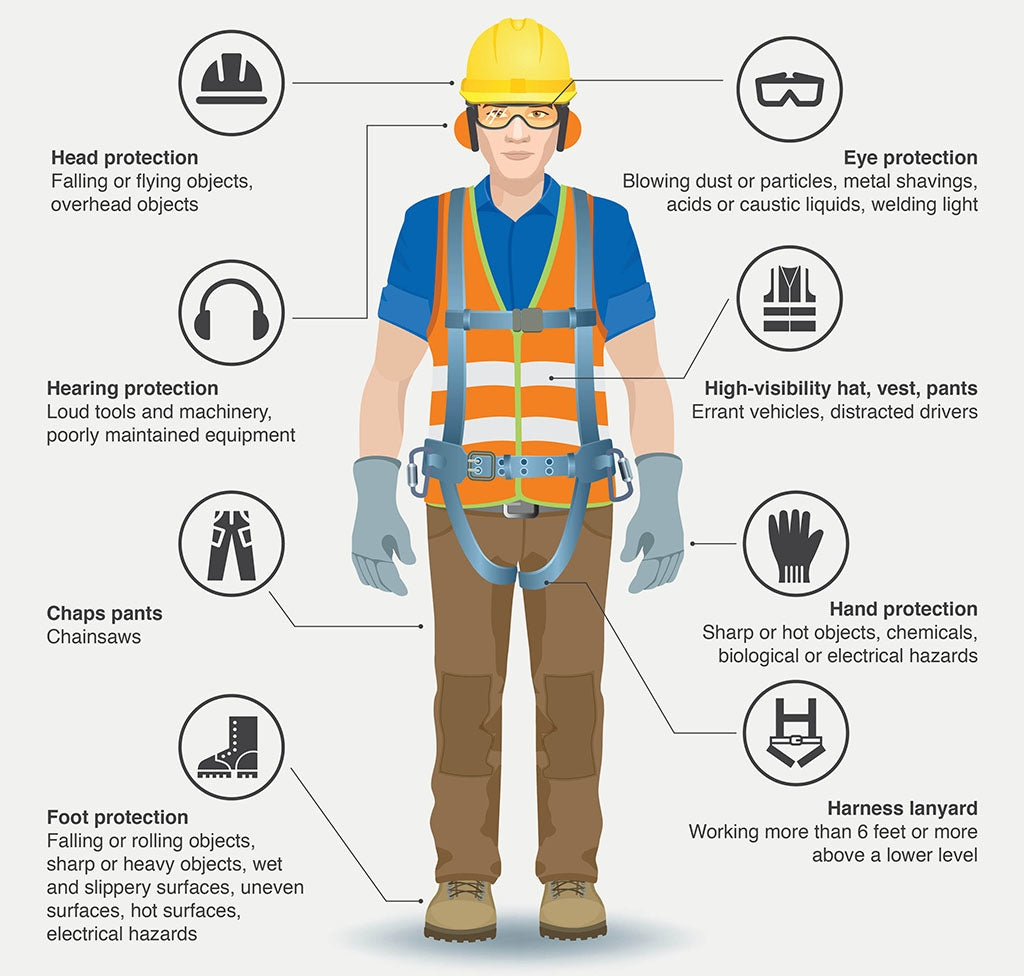
A Guide to Personal Protective Equipment (PPE) Safety at Work
by Natalia Emilse Elbaba on Aug 07, 2024Personal Protective Equipment (PPE) is a crucial component of workplace safety. It's designed to protect workers from hazards that can cause injury or illness. While PPE is essential, it's important to understand its limitations and use it correctly.
What is PPE?
PPE refers to equipment worn to protect against hazards. This includes items such as:
- Head protection: helmets, hard hats
- Eye and face protection: safety glasses, goggles, face shields
- Hearing protection: earplugs, earmuffs
- Respiratory protection: masks, respirators
- Hand protection: gloves
- Body protection: aprons, coveralls, suits
When to Use PPE?
PPE should be used as a last resort after other control measures have been implemented. It's essential to conduct a thorough risk assessment to determine the appropriate PPE for a specific job.
Here are some common situations where PPE is necessary:
- Exposure to hazardous chemicals
- Working in noisy environments
- Tasks involving sharp objects
- Working at heights
- Exposure to biological hazards
Choosing the Right PPE
Selecting the correct PPE is crucial for effective protection. Consider the following factors:
- The specific hazard: What is the risk you're trying to protect against?
- Comfort and fit: PPE should be comfortable to wear to encourage use.
- Compatibility with other PPE: Ensure that different pieces of PPE work together.
- Maintenance and cleaning: Proper care of PPE is essential for its effectiveness.
PPE Training
Employees must receive proper training on how to use PPE correctly. This includes:
- When to use PPE
- How to select the right PPE
- How to put on, adjust, wear, and remove PPE
- Limitations of PPE
- Maintenance and storage
Limitations of PPE
It's important to remember that PPE is not a complete solution. It should be used in conjunction with other safety measures. PPE can fail, become contaminated, or be improperly used.
Conclusion
PPE is a vital tool in workplace safety, but it's not a substitute for proper risk assessment and control measures. By understanding the importance of PPE, selecting the right equipment, and providing adequate training, you can significantly reduce the risk of injuries and illnesses in your workplace.
Remember: Always follow your company's safety guidelines and consult with your safety officer for specific PPE requirements.


